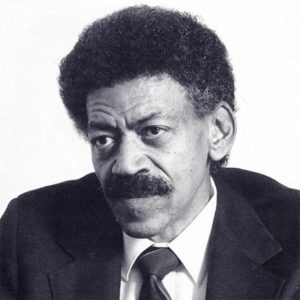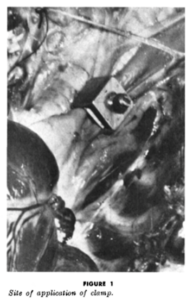This is part of the #BlackCardioInHistory series. #AHAEarlyCareerVoice is partnering with #BlackInCardio to feature a series of profiles of black/African American Cardiologists for #BlackInCardioWeek2020. For more information: blackincardio.com
Edward William Hawthorne was born near Port Gibson, Mississippi as the son of a minister and teacher. He suffered from polio at the age of 7 (1). He graduated high school in Washington DC and began his undergraduate study at Fisk University but later transferred to Howard University (1). It was at Howard University where Hawthorne spent most of the rest of his life.

Hawthorne earned his bachelor’s in science degree in 1941 and completed his medical degree in 1946 (1). Hawthorne was an intern at Freedmen’s Hospital from 1946-1947 and developed an interest in research, especially in the cardiovascular field (1). Dr. Hawthorne completed a Masters in Science in physiology in 1949, and then a Ph.D. in physiology in 1951, both from the University of Illinois in Chicago (1). This would be Hawthorne’s only stint away from Washington DC.
In 1951 Dr. Hawthorne moved back to Washington DC as he was appointed to faculty at Howard University(1). Dr. Howard helped organize masters and doctoral graduate programs in physiology at Howard and a laboratory focusing on cardiovascular research(1). Dr. Hawthorne was the head of the physiology department until 1969(1). All the while Dr. Hawthorne was moving ranks of the administration. He was assistant Dean of the College of Medicine from 1962-1967, associate Dean of the College of Medicine until 1970, and Dean of the Graduate School of Arts and Sciences in 1974. During these appointments, he was also Chairmen of the department of physiology and biophysics in 1969-1974(1).
Hawthorne referred to his research as “a personal vendetta against ignorance”(1). Dr. Hawthorne was a leader in Renal physiology research and utilized animal models ranging from rats, rabbits, dogs, and horses(1). Dr. Hawthorne was a pioneer in using techniques to measure heart function and size in conscious animals(1). In 3 papers from 1959 and 1962, both published in Circulation Research, Hawthorne examines hypertension and left ventricle size in dogs (3, 4, 5). Dr. Hawthorne pioneered an experimental hypertension model in dogs consisting of constricting the brachiocephalic and left subclavian arteries surgically(5).

Dr. Hawthorne would go on to publish many papers on cardiovascular physiology, which ultimately led to his election as a fellow of the American College of Cardiology in 1969 and vice president of the American Heart Association from 1969-1972(1). He was also active in predominantly Black associations, including the John A. Andrew Clinical Society, Alpha Omega Alpha, Alpha Phi Alpha, and Association of Former Interns and Residents of Freedmen’s Hospital. In 1980 he was elected to the prestigious Institute of Medicine of the National Academy of Sciences(1). Dr. Hawthorne died in October 1986, only 4 months after his final manuscript was published(6). Dr. Hawthorne is remembered as a pioneer for cardiovascular physiology research and education and a pioneer in the field of hypertension.
Reference
- Hawthorne, Edward William. https://doi-org. /10.1093/anb/9780198606697.article.1201084 American National Biography. Accessed 10-19-2020
- https://www.acc.org/latest-in-cardiology/articles/2018/02/13/14/42/harold-on-history-black-history-month-and-pioneering-african-american-physicians. Photo Credit: Howard University.
- Instantaneous dimensional changes of the left ventricle in dogs. HAWTHORNE EW. Circ Res. 1961. PMID: 13712425.
- Telemetering of ventricular circumference in dogs. HAWTHORNE EW, et al. J Appl Physiol. 1961. PMID: 13905534.
- Chronic experimental hypertension in dogs after constriction of brachicephalic and left subclavian arteries. HAWTHORNE EW, et al. Circ Res. 1962. PMID: 13905535.
- Estimation of left ventricular mass in conscious dogs. B Coleman, L N Cothran, E L Ison-Franklin, E W Hawthorne. Among authors: hawthorne ew. Am J Physiol. 1986. PMID: 3789168
“The views, opinions and positions expressed within this blog are those of the author(s) alone and do not represent those of the American Heart Association. The accuracy, completeness and validity of any statements made within this article are not guaranteed. We accept no liability for any errors, omissions or representations. The copyright of this content belongs to the author and any liability with regards to infringement of intellectual property rights remains with them. The Early Career Voice blog is not intended to provide medical advice or treatment. Only your healthcare provider can provide that. The American Heart Association recommends that you consult your healthcare provider regarding your personal health matters. If you think you are having a heart attack, stroke or another emergency, please call 911 immediately.”